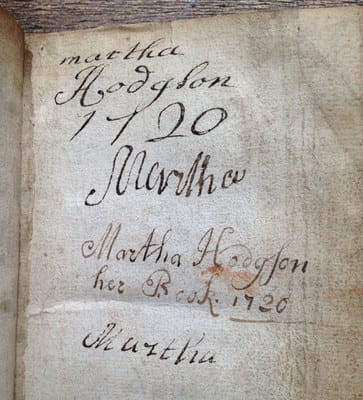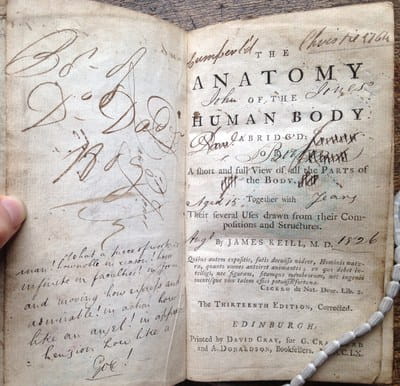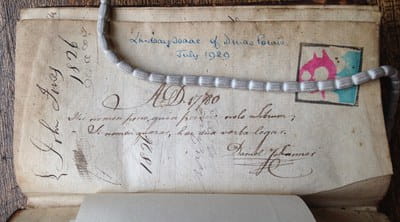Collections Review project is child’s play
08 Jan 2016
Dorothy Fouracre
Handling the library’s rare books as we assess them as part of our on-going Collections Review project is a pleasure, and the marginalia which we frequently find in them remind us that they were owned and used by people for centuries before becoming part of a rare book collection. Yet occasionally we come across markings in books which remind us even more strongly of their past role as personal objects: markings by children.
One such find is this flyleaf from Jean Fernel’s 1564 work, Medicina (below left). There are clearly several different hands on it, but the rather shaky attempt towards the top right at writing the author’s surname, which includes getting the “N” the wrong way round and running out of space for the “L”, must be by a child. There is also a rather sweet drawing of a person, and although we can’t decide here on whether it was done by a child or an adult, either way it shows the book not being used for its ‘proper’ purpose.
An even younger reader seems to have got their hands on the Library’s copy of The sick-mans rare jewel from 1674 – dozens of pages of this volume are covered in inky scratchings, splodges and scribbles. The picture above right shows one such example.

Paper remained an expensive commodity until the mid-nineteenth century, so it could be that Martha and others we’ve found were simply taking a rare opportunity to practice. At the back of Practical chirurgery by Hugh Ryder (1689) one hand has written the alphabet out neatly, whilst another has gone over it very deliberately; so hard, in fact, that it has bled through the page. Along with some more unsteady characters underneath, this must have been some kind of handwriting practice.


These are just a few select examples of the marks left by the collection’s less apparent previous users, and are a nice reminder that books on anatomy, surgery and medicine had (and continue to have) a far greater reach than just their intended professional audience.
Find updates and images of re-discovered treasures from the project on the Hunterian Museum’s Twitter account: @HunterianLondon #CollectionsReview
Dorothy Fouracre, Collections Review Assistant





